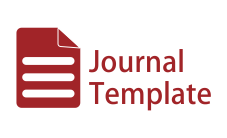An Islamic perspective on decision making under uncertainty
DOI:
https://doi.org/10.21580/jiemb.2021.3.1.8935Keywords:
Decision making, uncertainty, IslamAbstract
Purpose – The purpose of this study is to find out the Islamic view regarding decision making in uncertainty.
Method – The method used is literature study from various related references.
Result – The result of this study is that uncertainty or risk is not something that is forbidden in Islam.
Implication – The implication of this study is the advantage of Islamic economics which lies in recognizing this uncertainty. Very useful as a stimulant and motivation to "engineer" an investment to bring a return.
Originality – This is the first study examining an Islamic perspective on decision making under uncertainty.
Downloads
References
Afdawaiza, A. (2011). Uncertainty (Ketidakpastian) dan Antisipasinya Dalam Perspektif Keuangan Islam. Asy-Syir'ah: Jurnal Ilmu Syari'ah dan Hukum 45, no. 2.
Al-Suwailem, S. (2002). Decision-making under uncertainty: an Islamic perspective. In Islamic Banking and Finance: New Perspectives on Profit-Sharing and Risk (pp. 15-30). Edward Elgar Publishing.
Antonio, M. S. (2001). Bank Syariah: dari teori ke praktik. Gema Insani.
Baker, S. R., Bloom, N., & Davis, S. J. (2016). Measuring Economic Policy Uncertainty. The Quarterly Journal of Economics, Volume 131, Issue 4, Pages 1593–1636, https://doi.org/10.1093/qje/qjw024.
Bouslama, G., & Lahrichi, Y. (2017). Uncertainty and risk management from Islamic perspective. Research in International Business and Finance 39, 718-726.
Deng, Y. (2020). Uncertainty measure in evidence theory. Science China Information Sciences, 63(11), 1-19.
Denœux, T., Dubois, D., & Prade, H. (2020). Representations of Uncertainty in AI: Beyond Probability and Possibility. In A Guided Tour of Artificial Intelligence Research (pp. 119-150). Cham: Springer.
Elfakhani, S., & Sidani, Y. M. (2015). Uncertainty or ‘gharar’in contracts under the Islamic ethical code. In Handbook of research on Islamic business ethics. Edward Elgar Publishing.
Erbaş, S. N., & Mirakhor, A. (2013). The Foundational Market Principles of Islam, Knightian Uncertainty, and Economic Justice. Economic development and Islamic finance, 93.
Finkelstein, A., & Poterba, J. (2014). Testing for asymmetric information using “unused observables” in insurance markets: Evidence from the UK annuity market. Journal of Risk and Insurance 81, no. 4, 709-734.
Fontaine, R. (2008). Islamic moral responsibility in decision making. International Journal of Economics, Management and Accounting, 16(2).
Fontana, G., & Gerrard, B. (2004). A Post Keynesian theory of decision making under uncertainty. Journal of Economic Psychology 25, no. 5, 619-637.
Grant, S., Rich, P., & Stecher, J. (2020). Objective and subjective rationality and decisions with the best and worst case in mind. Theory and Decision, 1-12.
Hassan, M. K., Paltrinieri, A., Dreassi, A., Khan, A., & Bahoo, S. (2020). A bibliometric review of takaful literature. International Review of Economics & Finance.
Ifcher, J., & Zarghamee, H. (2020). Behavioral economic phenomena in decision-making for others. Journal of Economic Psychology, 77, 102180.
Jindra, J., & Moeller, T. (2020). Time since targets’ initial public offerings, asymmetric information, uncertainty, and acquisition pricing. Journal of Banking & Finance 118: 105896.
Karim, A. S. (2007). Bank Islam, Analisis Fiqih dan Keuangan .Jakarta: Rajawali Press.
Lahuri, S. B. (2012). Teori Uncertainty (Ketidakpastian) dalam keuangan Islam. Islamic Economics Journal 1, no. 1, 31-48.
Muhammad. (2005). Manajemen Perbankan Syari’ah. Yogyakarta: UPP AMP YKPN.
Nordin, N., Aziz, S. A., Ahmad, A. A., & Daud, N. (2014). Contracting with Gharar (uncertainty) in forward contract: what does Islam says? Asian Social Science 10, no. 15, 37.
Orhan, Z. H. (2020). Money from the viewpoint of Islam, history of Islam and Islamic economics. Islamic Monetary Economics: Finance and Banking in Contemporary Muslim Economies.
Othman, A., Alhabshi, S., & Haron, R. (2019). The effect of symmetric and asymmetric information on volatility structure of crypto-currency markets: A case study of bitcoin currency. Journal of Financial Economic Policy, Vol. 11 No. 3, 432-45.
Sanchez‐Rodrigues, V., Potter, A., & Naim, M. (2010). Evaluating the causes of uncertainty in logistics operations. The International Journal of Logistics Management, Vol. 21 No. 1, https://doi.org/10.1108/09574091011042179, 45-64.
Ullah, A., Arshad, M., Kächele, H., Zeb, A., Mahmood, N., & Müller, K. (2020). Socio-economic analysis of farmers facing asymmetric information in inputs markets: evidence from the rainfed zone of Pakistan. Technology in Society 63: 101.
Waemustafa, W., & Sukri, S. (2016). Theory of Gharar and its interpretation of risk and uncertainty from the perspectives of authentic hadith and the Holy Quran: Review of literatures. Journal of Islamic Economics, Banking and Finance, 113(5741), 1-17.
Downloads
Published
Issue
Section
License
Authors who publish with this journal agree to the following terms:
Authors retain copyright and grant the journal right of first publication with the work simultaneously licensed under a Creative Commons Attribution-ShareAlike 4.0 International License that allows others to share the work with an acknowledgement of the work's authorship and initial publication in this journal.
Authors are able to enter into separate, additional contractual arrangements for the non-exclusive distribution of the journal's published version of the work (e.g., post it to an institutional repository or publish it in a book), with an acknowledgement of its initial publication in this journal.
Authors are permitted and encouraged to post their work online (e.g., in institutional repositories or on their website) prior to and during the submission process, as it can lead to productive exchanges, as well as earlier and greater citation of published work (See The Effect of Open Access).



